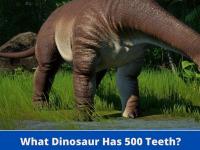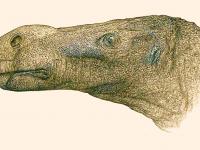Anchisaurus

Anchisaurus is a genus of basal sauropodomorph. An early herbivorous dinosaur, it lived during the Early Jurassic period; more specifically, the Pliensbachian to Toarcian ages, 190 to 174 million years ago. Until recently it was classed as a member of Prosauropoda. The name comes from the Greek αγχι/agkhi anchi-; “near, close” + Greek σαυρος/sauros; “lizard”. Anchisaurus was coined as a replacement name for Amphisaurus, which was itself a replacement name for Hitchcock’s Megadactylus, both of which had already been used for other animals.
Anchisaurus was a rather small dinosaur, with a length of just over 2 metres (6.6 ft), which helps explain why it was once mistaken for human bones. It probably weighed around 27 kilograms (60 lb). However, Marsh’s species A. major (also known as Ammosaurus) was larger, from 2.5 to 4 metres (8 ft 2 in to 13 ft 1 in) and some estimates give it a weight of up to 70 pounds (32 kg). Gregory S. Paul estimated its length at 2.2 meters and its weight at 20 kg in 2010.

Sauropodomorph remains were first discovered in North America in 1818, when some large bones were uncovered by Mr. Solomon Ellsworth Jr while with gunpowder excavating a well in East Windsor, Connecticut. At the time of their discovery it was thought that the bones might be those of a human, but the presence of tail vertebrae in 1821 falsified that idea. They are now recognized as those of an indeterminate sauropodomorph, possibly more closely related to the plateosaurian prosauropods.
Due to its primitive appearance, Anchisaurus was previously classified as a prosauropod, a member of a group of animals related to or ancestral to the sauropods. Recent investigations show that a group of traditional prosauropods form a monophyletic sister-group to Sauropoda, and that Anchisaurus is instead closer to sauropods.
The family Anchisauridae was first proposed by Othniel Charles Marsh in 1885 and later defined as a clade consisting of Anchisaurus and its nearest relatives. However, it is not clear which other genera are included in the family; many of the dinosaurs once included have since been moved elsewhere, and the group is not used in most current taxonomies.








